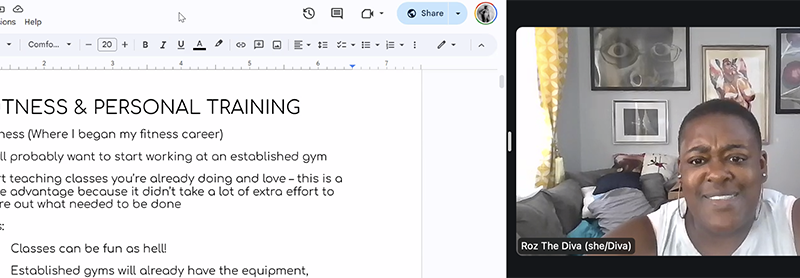[memberonly level=“Group Membership for Businesses of 2-5 individuals, Student, Individual or Solo-Preneur”] Please note that…

Features versus benefits: How knowing the difference can improve your marketing
Just like the words “sales” and “marketing” are often used interchangeably, “features” and “benefits” often get jumbled together. We get the basic idea—features and benefits describe what you are selling—but what do these words really mean and why is knowing the difference important?
Understanding the difference between features and benefits can help you fine-tune your marketing strategy, make your product or service more appealing to your customers, and help you write a powerful elevator pitch to use at your next networking event.
How do features and benefits fit into my marketing strategy?
In a nutshell, features are the facts and figures about a product or service. For example, the thread count on a set of sheets, the number of BTUs on an air conditioner, or the ingredients in your cereal are all features.
Benefits translate how the features of a product or service can help the customer. It answers the question “How does this solve my problem?” When determining what benefits you offer your customers, ask yourself the following:
- Will doing business with me save customers time or money?
- Will my product or service help customers avoid hassle?
- Will my product or service help improve customers’ lives or make them feel happy?
Consumers have to translate features into benefits on their own when they are out shopping. We have to decide what bread to buy, where to get the car washed, and what restaurant to eat at based on multiple factors, including price, convenience, personal taste.
But when it comes to making a commitment—like signing up for class packages or choosing a vendor—clients aren’t always going to be able to translate features into benefits on their own. That’s where you come in. It is your job to showcase how the product or service you provide will meet your customers’ needs.
Let’s explore some examples of translating features into benefits using a pole studio’s offerings:
Weekend classes=Will fit into a busy person’s schedule
Small class sizes=Each student will get more individual attention
Dance wear available for purchase on site=Eliminates customers’ need to find a specialty shop
Studio is in a prime location=Eliminates customers’ need to search for parking or feed the meter during class
Studio is clean, bright, and updated=Students will feel more relaxed and comfortable coming to your space
When do I use features versus benefits in my marketing pitch?
When you use features versus benefits in a marketing pitch—whether written or spoken—will depend on who you are communicating with. For the most part, you’re going to highlight the benefits more than the features because the benefits appeal to customers’ emotions and demonstrate that you know how to help them. Plus, most people get bored or intimidated by industry jargon.
But there will be times when highlighting the features of your product or service will save the day. For example, my husband is a car guy. He wants to know all about the inner workings of the car and will even create spreadsheets to compare various models. He’s the kind of guy you want to talk features with.
Me? I want the benefits—I want a car that is comfortable for the whole family to ride in, will fit my groceries and all of our gear, and I want it to be a bright enough color that I can find it in the parking lot (I can’t be the only one who struggles). We both have the same need (a new car), but we each require an entirely different pitch.
What now?
Now that you understand the difference between features and benefits, go through your marketing copy and ask yourself whether you have made clear the benefits of doing business with you. Imagine what problems your customers might be facing and how your product or service can help them solve or avoid that problem. Highlight your benefits first, but allow customers to explore the details of your features if they want to dig deeper.



